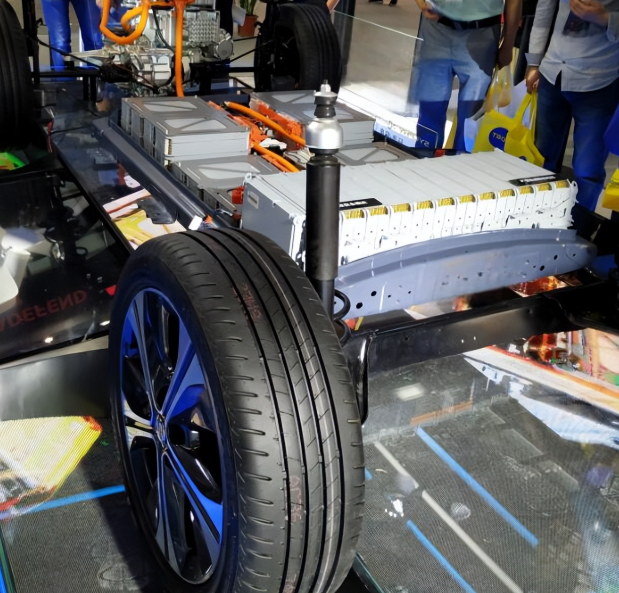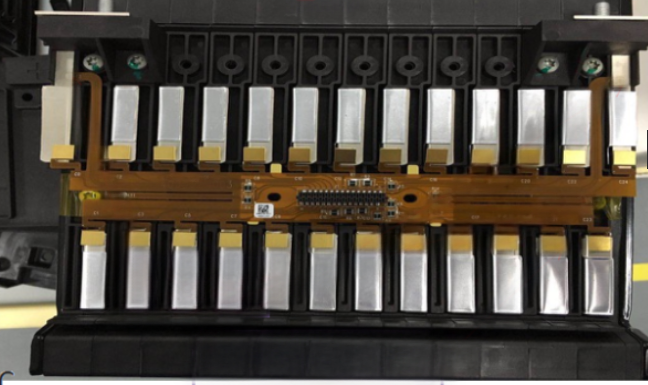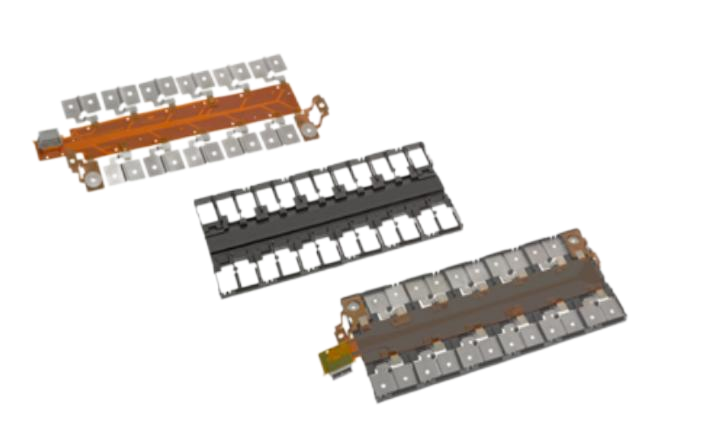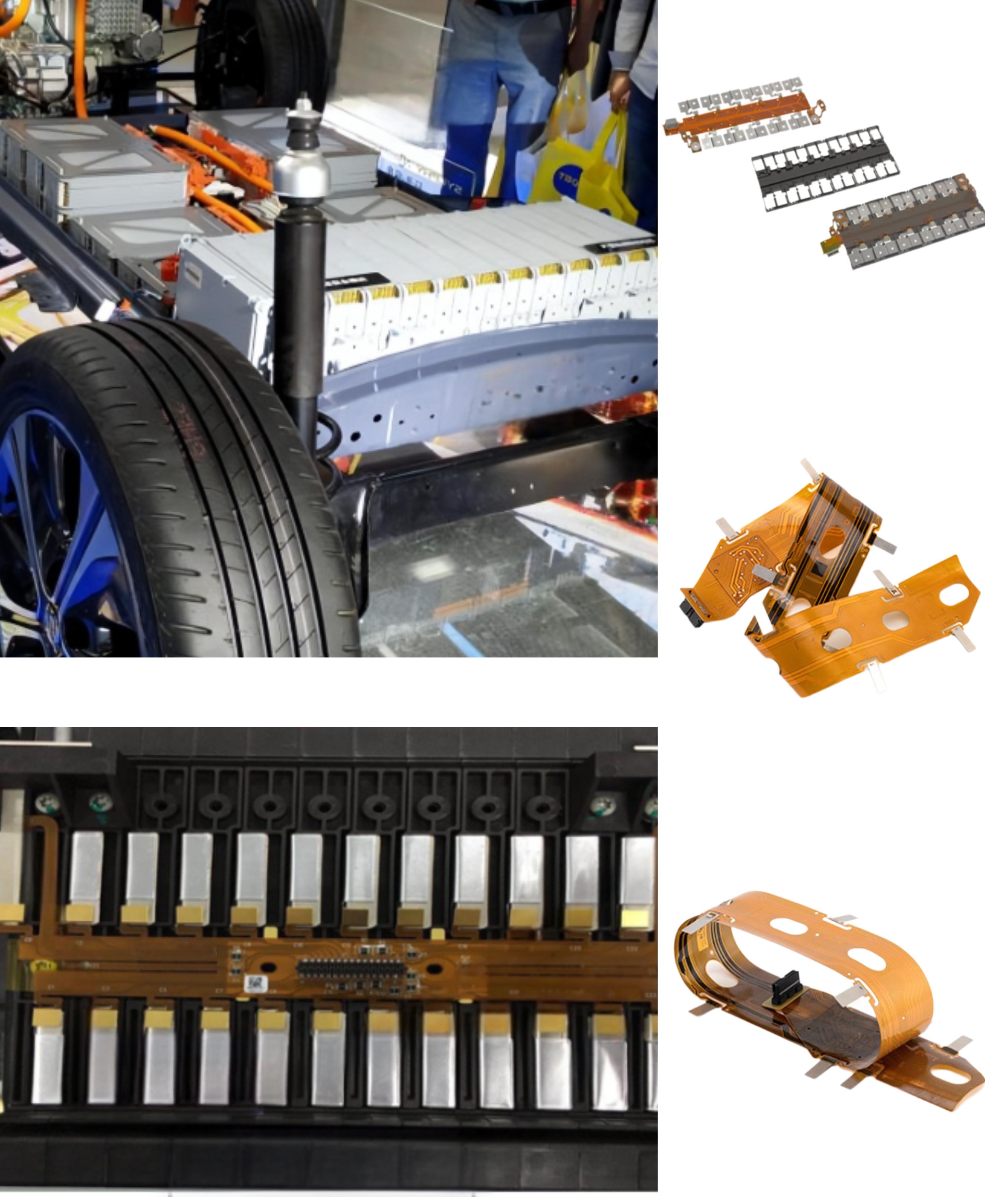Search
Common Issues and Solutions in the Production of FPC for New Energy Vehicle Power Batteries
- Feb 18,2025
-
Share
In the burgeoning realm of new energy vehicle power battery manufacturing, the production of Flexible Printed Circuits (FPC) is rife with challenges. As a vanguard in the FPC manufacturing domain, Shenzhen Huaruixin Electronics Co., Ltd. has amassed copious expertise in surmounting these hurdles. Herein, we expound on some prevalent problems and their corresponding remedies, interlaced with industry - specific terminologies.

I. Circuit - related Anomalies
A. Short - circuits
1.Root Causes: Short - circuits in FPC production for power batteries are often precipitated by suboptimal circuit layout design. Inadequate clearance between adjacent conductive traces, a phenomenon known as "trace proximity," can lead to inadvertent electrical connections during the manufacturing process, particularly in the etching and soldering stages. For instance, over - etching, a process deviation where excessive removal of the conductive material occurs, may cause adjacent traces to bridge, resulting in a short - circuit.
2.Mitigation Strategies: Shenzhen Huaruixin Electronics Co., Ltd. places paramount importance on meticulous circuit design. Employing advanced Electronic Design Automation (EDA) software, the company conducts comprehensive simulations to optimize the trace layout and ensure sufficient clearance. During the manufacturing process, stringent process control is exercised. Precise regulation of the etching process parameters, including the etching solution concentration, temperature, and time, is crucial to prevent over - etching and safeguard against short - circuits.
B. Open - circuits
1.Underlying Reasons: Open - circuits typically stem from issues related to the adhesion between the conductive material and the substrate, or flaws in the soldering process. In the context of power battery FPCs, which are subject to mechanical vibrations and thermal cycling within the vehicle, poor adhesion of the copper foil to the polyimide (PI) substrate can cause delamination over time, leading to an open - circuit. Additionally, improper soldering, such as insufficient wetting due to incorrect solder paste application or suboptimal soldering temperature profiles, can also give rise to open - circuit defects.
2.Remedial Measures: To enhance adhesion, Shenzhen Huaruixin Electronics Co., Ltd. selects high - quality materials and employs surface treatment techniques such as plasma etching or chemical activation. These methods increase the surface energy of the materials, promoting better adhesion. For the soldering process, the company adheres to strict process control. The choice of solder paste, which is often a eutectic alloy with specific melting characteristics, is carefully considered. The soldering temperature profile, including the ramp - up, soak, and reflow phases, is precisely calibrated to ensure optimal solder joint formation. Prior to mass production, rigorous solder joint reliability tests, such as shear and pull - test, are conducted to validate the integrity of the soldering process.

II. Material - related Hurdles
A. Material Thermal Expansion Mismatch
1.Causal Factors: Power batteries generate significant heat during operation, subjecting the FPC to elevated temperatures. A substantial mismatch in the Coefficient of Thermal Expansion (CTE) between the base material and the conductive material can induce mechanical stress within the FPC. For example, if the CTE of the polyimide substrate and the copper foil differ substantially, thermal cycling during battery charging and discharging can cause the materials to expand and contract at different rates, leading to warping, cracking, or delamination of the FPC.
2.Countermeasures: Shenzhen Huaruixin Electronics Co., Ltd. undertakes in - depth research on material combinations to select materials with closely matched CTEs. Additionally, the company employs stress - relieving design strategies, such as the incorporation of compliant layers or the use of vias with optimized geometry. These measures help to dissipate the thermal stress and mitigate the impact of thermal expansion mismatch.
B. Material Degradation
1.Contributing Factors: Over the long - term service life of power battery FPCs, materials are exposed to a harsh environment comprising high temperatures, humidity, and chemical substances within the battery. These factors can induce material degradation, manifested as a decrease in the mechanical strength and insulation properties of the base material, and an increase in the resistivity of the conductive material.
2.Preventive and Remedial Actions: The company sources high - quality, degradation - resistant materials, often with additives or coatings to enhance their durability. In the design of FPCs, protective coatings such as parylene or epoxy - based conformal coatings are applied to shield the materials from the corrosive environment. Regular material degradation tests, including accelerated aging tests in simulated service conditions, are conducted to monitor the material condition and enable timely adjustment of production processes and material selection strategies.

III. Process - related Bottlenecks
A. Registration Deviation in the Lamination Process
1.Causes: In the lamination process of multi - layer FPCs for power batteries, registration deviation, also known as "layer - to - layer misalignment," can occur. This is typically caused by inaccuracies in the positioning system of the lamination equipment, or by environmental factors such as temperature and humidity fluctuations, which can affect the dimensional stability of the materials. Excessive registration deviation can lead to misalignment of the conductive traces on different layers, compromising the electrical integrity of the FPC.
2.Solutions: Shenzhen Huaruixin Electronics Co., Ltd. invests in high - precision lamination equipment equipped with advanced optical alignment systems. The production environment is maintained under strict temperature and humidity control to ensure the dimensional stability of the materials. Real - time monitoring and feedback control are implemented during the lamination process to promptly correct any registration deviations.
B. Inconsistent Coating Thickness
1.Reasons: In the application of coatings such as solder masks or protective films on FPCs, inconsistent coating thickness can result from issues with the coating equipment, such as uneven spray nozzles or roller misalignment, or from improper process parameters, such as inconsistent coating speed or pressure. Uneven coating thickness can impact the appearance, performance, and reliability of the FPC. For example, a thin solder mask may not provide adequate protection against solder bridging, while a thick coating may reduce the flexibility of the FPC.
2.Solutions: The company conducts regular maintenance and calibration of the coating equipment to ensure its optimal performance. Process parameters are optimized through experimental design and analysis. Precise control of the coating speed, pressure, and temperature is achieved using automated control systems. Prior to mass production, samples are inspected using non - destructive thickness measurement techniques, such as optical or X - ray fluorescence, to ensure that the coating thickness meets the specified tolerances.

![]() By effectively addressing these common issues, Shenzhen Huaruixin Electronics Co., Ltd. is able to ensure the high - quality production of FPCs for new energy vehicle power batteries, thereby contributing to the advancement of the new energy vehicle industry.
By effectively addressing these common issues, Shenzhen Huaruixin Electronics Co., Ltd. is able to ensure the high - quality production of FPCs for new energy vehicle power batteries, thereby contributing to the advancement of the new energy vehicle industry.

Let’s talk! We’ll provide the perfect solution for you!
-
 Huaruixin Electronics mainly produces printed circuit boards as the core business, to provide customers with one-stop solutions for FPC/PCB production, components sourcing and Assembly.
Huaruixin Electronics mainly produces printed circuit boards as the core business, to provide customers with one-stop solutions for FPC/PCB production, components sourcing and Assembly. - WHAT WE DO — PCB Design Solutions — Flex PCB Production — Components Sourcing — FPC&PCB Assembly
- PRODUCTS — Single Sided Flexible Circuits — Double Sided Flexible Circuits — Multilayer Flexible Cirucits — Rigid-Flex Circuits — FPC Assembly — PCB Assembly
- CAPABILITY — FPC Capability — Rigid-Flex Capability — PCB Capability — Assembly Capability
- Copyright © 2024 Shenzhen Huaruixin Electronics Co., Ltd. All Rights Reserved.
- Design By BONTOP


